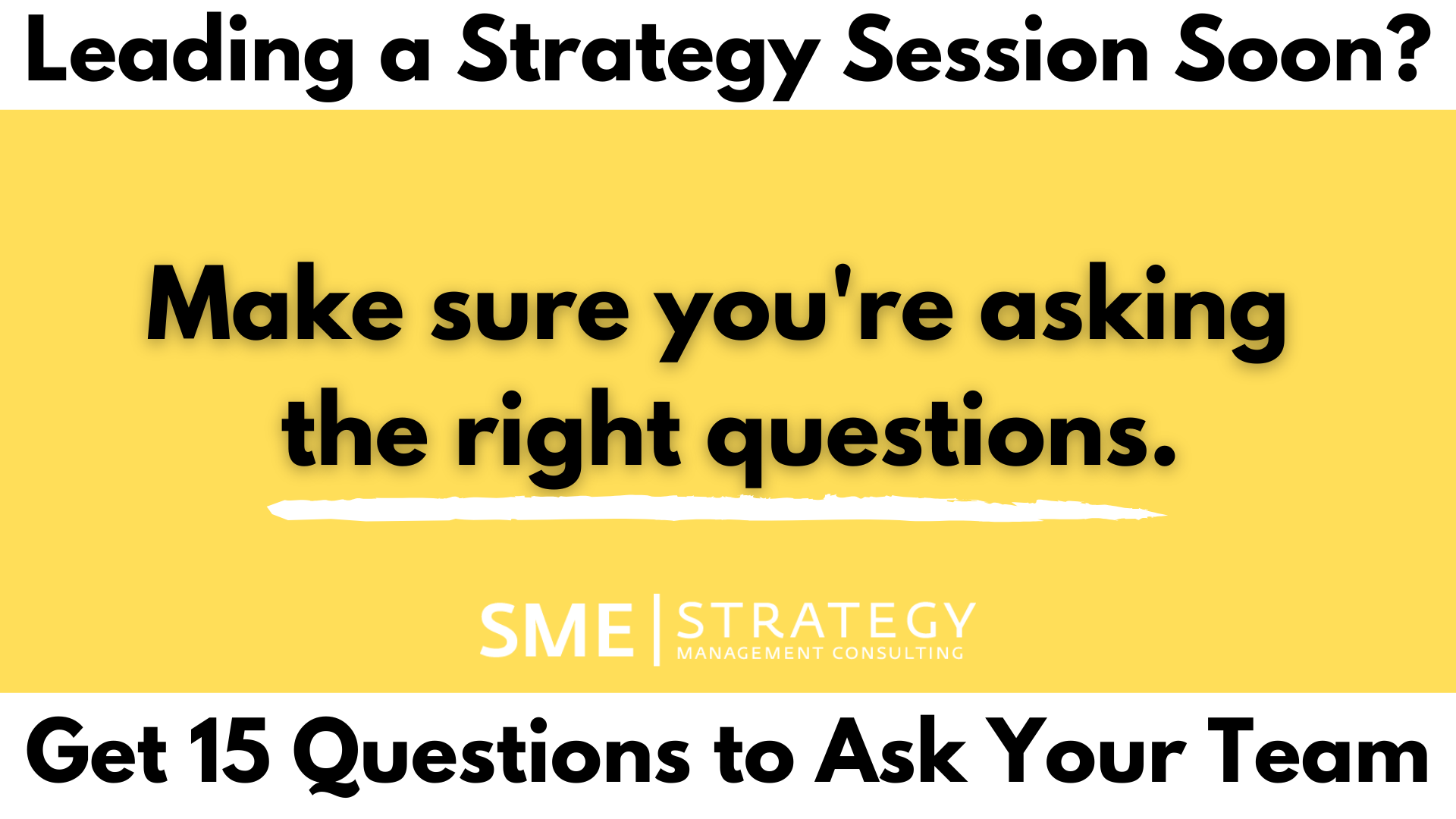
Many companies create a strategic plan every year. When done correctly, these plans layout goals for the company for the following 12 months. Unfortunately, oftentimes companies don’t realize their goals. The main culprits for this are lack of focus and accountability. This article explains a methodology to overcome this challenge.
What To Do During the Planning Process
To best ensure your strategic plan is properly executed once complete, be sure to include all key constituents in the planning process.
Not only do you want to get the ideas and feedback of key team members, but you want their buy-in as they will be the ones to actually execute on your plans. Not only do you want your team to gain consensus on the chosen strategies, but you need them to agree to the proposed timelines. For example, if you think a project will take 3 months to complete and the team member in charge of it believes it will take 12 months, you’ll have a problem.
Just starting the strategic planning process? Make sure you're asking the right questions.
As such, involve your team in coming up with ideas and strategies and setting the timeline for implementation. In doing so, you may have to determine that some current initiatives or day-to-day activities be tabled to make room for the new ones.
In addition, during the planning process, you must break key new initiatives and goals into smaller milestones and assign accountability. For example, if your company wants to create a new product, milestones might include conducting R&D, developing a beta product, performing customer testing, and finally launching the product.
It’s not only important to identify these milestones, but to put realistic dates for the completion of each so your goals are timely and measurable. Importantly, you must also assign a team member to oversee and be accountable for the project. Importantly, oftentimes your best team members are assigned the most projects since they are the most capable. Unfortunately, loading certain team members with too much responsibility usually backfires as they become frustrated and can leave your company while other team members become complacent.
One idea to overcome this challenge is to assign an individual to lead each project (your superstar) and a support individual (your future superstar). The team leader’s goal is to move the new project from the get-go to at least the first milestone. In doing so, they gain momentum on the project and help teach and train the support individual. Then the support individual takes over the project with the support of the initial project leader.
What To Do After the Planning Process
While meetings can often be a drag in companies, they can also be great for maintaining focus and accountability and allowing your company to best execute on your strategic plan.
A best practice is to have periodic meetings (e.g., at the beginning of each month) in which each manager presents the status of the goals under their purview. For instance, using the new product example above, each month the manager responsible for that goal would present their progress on the milestones. This holds them accountable and lets the team know whether the goal is on track for timely completion. If not, the company can consider putting more resources into the project.
Inevitably new opportunities will arise while your team is executing on your strategic plan. Sometimes these opportunities are worth exploiting immediately. Other times, they should be ignored or postponed. The key is to assess the new opportunities in regards to your current plans. Key questions to ask are as follows:
- What is the status (in terms of milestones) of each of the current plans?
- Which plans would need to be postponed in order to pursue the new opportunity?
- What is the potential financial impact of the new opportunity and does it surpass the potential value of our current initiatives?
Taking this mature approach to assessing new opportunities typically results in such opportunities being denied or delayed. This is often quite beneficial to your company as most companies are unable to finish key projects. Such unfinished projects are often referred to as “partially completed bridges” which have absolutely no value. Rather, it’s crucial for companies to focus on completing a bridge, realizing its value, and moving to create more bridges.
Business and strategic planning is critical to any business’ success. But if they can’t execute on the plans they derive, they lose their value. Use the methodologies discussed above during the planning process and afterwards in keeping your team focused and accountable. In doing so, your company can realize its goals and thrive.
To create your own strategic plan from scratch, take our course. Video lessons, templates & tools included.

To learn more about Dave's company, visit their website: Growthink.



